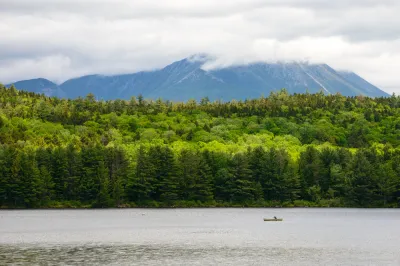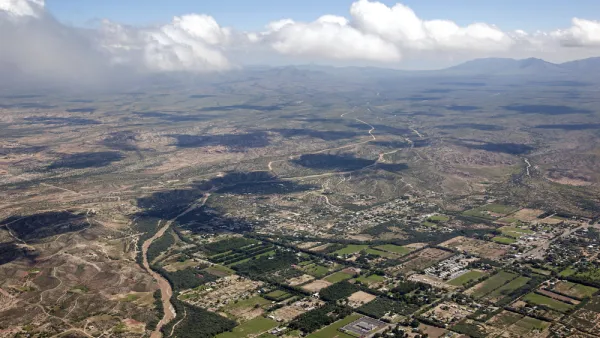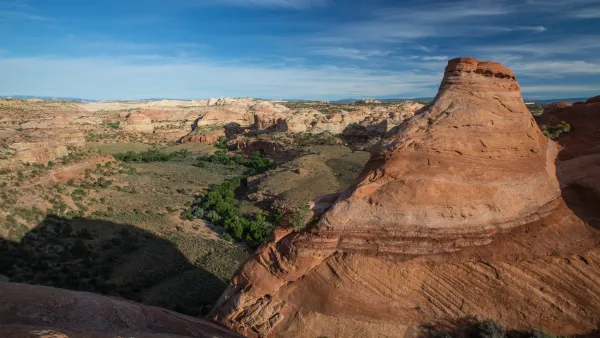What we now so far about the Interior Department's plans to shrink a "handful" of national monuments around the country.

Today, the Associated Press broke the news of a long-awaited report by Interior Secretary Ryan Zinke on the fate of 27 national monuments under review by the Trump Administration.
Secretary Zinke told the Associated Press that he will recommend boundary adjustments of some of the monuments, but did not mention any specifics.
The San Gabriel Valley Tribune followed up on the Associated Press' coverage, explaining what is known so far about the changes proposed in the report. "None of the sights would revert to new ownership, [Zinke] told the AP. He said public access for uses such as hunting, fishing or grazing would be maintained or restored."
"He did not comment on whether any portions of the 27 monuments under a White House-ordered review would be opened up to oil and gas drilling, mining, logging or other industries, something Trump has advocated," according to that article.
Jim Carlton also reported on the breaking story for The Wall Street Journal, noting that the announcement fell short of a detailed account of the report Zinke will give to President Trump. Also according to Carlton, "any reductions would likely launch a battle between environmentalists, who want the monuments preserved, and some locals."
Sammy Roth also reported on the announcement for the Desert Sun, noting that the idea of rolling back protections on national monuments is "largely unprecedented." Roth's coverage also includes background of the Obama Administration's use of the Antiquities Act to protect more 5.7 million acres of land and 550 million acres of water.
Juliet Eilperin and Darryl Fears report the big news for The Washington Post as follows:
While Zinke submitted a report to the White House Thursday and told the Associated Press he backed changing the designations for a “handful” of protected federal sites, the Interior Department did not release any specifics. Instead, it released a report summary that described each of the 27 protected areas scrutinized as “unique.”
Finally, Laura Parker also picked up the news for National Geographic, providing links to previous stories on the Interior Department's study, as well as some early indications of the political dynamics that will be at work as more details of the plan emerge.
FULL STORY: No national monuments will be eliminated, Zinke says

National Parks Layoffs Will Cause Communities to Lose Billions
Thousands of essential park workers were laid off this week, just before the busy spring break season.

Retro-silient?: America’s First “Eco-burb,” The Woodlands Turns 50
A master-planned community north of Houston offers lessons on green infrastructure and resilient design, but falls short of its founder’s lofty affordability and walkability goals.

Delivering for America Plan Will Downgrade Mail Service in at Least 49.5 Percent of Zip Codes
Republican and Democrat lawmakers criticize the plan for its disproportionate negative impact on rural communities.

Test News Post 1
This is a summary

Test News Headline 46
Test for the image on the front page.

Balancing Bombs and Butterflies: How the National Guard Protects a Rare Species
The National Guard at Fort Indiantown Gap uses GIS technology and land management strategies to balance military training with conservation efforts, ensuring the survival of the rare eastern regal fritillary butterfly.
Urban Design for Planners 1: Software Tools
This six-course series explores essential urban design concepts using open source software and equips planners with the tools they need to participate fully in the urban design process.
Planning for Universal Design
Learn the tools for implementing Universal Design in planning regulations.
EMC Planning Group, Inc.
Planetizen
Planetizen
Mpact (formerly Rail~Volution)
Great Falls Development Authority, Inc.
HUDs Office of Policy Development and Research
NYU Wagner Graduate School of Public Service





























